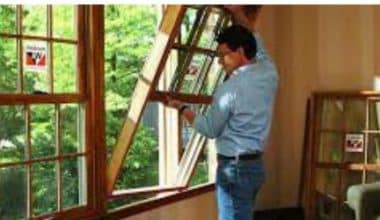Installing outdoor lighting can completely transform the look and feel of your home or business’s exterior. Properly designed lighting highlights your home’s best features, creates an inviting ambiance, improves security, and increases your property’s value.
But achieving these benefits requires careful planning and skilled installation that professionals specialize in.
Types of Outdoor Lighting
Oregon Outdoor Lighting designers have advice about how to fully realize your vision while avoiding common pitfalls. Carry on reading if you’re interested in finding out how to illuminate your home’s exterior and maximize curb appeal.
Landscape Lighting
Illuminates gardens, pathways, trees, pools, and other natural elements. Strategically placed low-voltage fixtures create depth and drama.
Security Lighting
Motion sensor floodlights and spotlights deter intruders while providing visibility and safety.
Hardscape Lighting
Showcases patio, deck, driveway, and walkway details. Grazes surfaces with light to highlight textures.
Architectural Lighting
Accents exterior home features like entryways, columns, and fountains. Up-lighting creates a focal point.
Accent Lighting
Strategic down-lighting or spotlights draw attention to art, signage, or other focal points.
Benefits of Professional Lighting
Curb Appeal & Aesthetics
Outdoor lighting can add an instant wow factor and aesthetic cohesion. It highlights the best features of your home and landscaping. There are many ways to improve your workspace, but often the exterior gets ignored. Outdoor lighting boosts curb appeal and makes a business seem welcoming.
Added Security
Strategic lighting deters crime while improving visibility and safety. No more tripping on steps.
Enjoyment of Outdoor Spaces
Proper lighting extends the use of outdoor living areas into the night. Entertain guests in a gorgeous illuminated setting.
Property Value Increase
Outdoor lighting can boost a home’s value by 20% or more. Curb appeal and perceived quality play a major role. It may be worth understanding how to value real estate investments then you can see the true ROI of any upgrades you make.
Quality & Customization
Professionals design fully customized plans and use commercial-grade materials for longevity and reliability.
Choosing the Right Pro
Seek outdoor specialists with 5+ years of experience, licensing, insurance, proven examples, and positive reviews. They should understand lighting design, voltages, wiring, and codes and have access to professional-grade equipment and fixtures you can’t buy at the hardware store.
Red Flags
Watch out for vague promises, limited experience, lack of licensing and insurance, and no examples of past work. Unrealistic low prices often mean poor quality and cutting corners.
Questions to Ask:
- How long have you been specializing in outdoor lighting?
- Are you licensed, bonded, and insured?
- What is your design/consultation process?
- Do you handle permits and inspections?
- What brands and grades of fixtures do you use?
- Do you offer warranties on labor and materials?
- Can I see examples of your past outdoor lighting projects?
The Design Process
Initial Consultation
The designer will discuss your vision, budget, priorities, and timelines. They’ll assess your home’s architecture, landscaping, style, and trouble areas. You’ll review lighting types, fixtures, and placement options and look at imagery to hone in on your perfect lighting scheme.
Developing the Lighting Plan
Using your input, the designer maps out fixture types and locations, cable routing, transformer sizing, dimming needs, and zones. Permits and inspections may need to be arranged. Expect 2-3 iterations to perfect the lighting plan.
Installation Process
Electrical and Wiring
Cabling gets routed underground whenever possible and attached unobtrusively. Fixtures run on low-voltage systems powered by central transformers.
Positioning Fixtures
The installers will stake or mount your lighting fixtures and test for optimal angles and light spreads. Facade lighting may require lifts or scaffolding.
Testing and Adjustments
Your lighting technicians will fine-tune the system by adjusting angles and brightness. They’ll replace any defective bulbs and program control systems.
Cleanup and Handoff
The team will remove all debris, trenches, materials, and work items. They’ll provide training on using your new outdoor lighting controls.
Maintaining Your Lighting
While outdoor lighting systems are built to last, periodic maintenance is recommended.
- Clean fixtures and replace bulbs as needed
- Check electrical connections are tight and corrosion-free
- Adjust angles and spreads over time as plants grow
- Consider a yearly checkup by your original installer
Outdoor Lighting Control Systems
Outdoor lighting achieves its maximum impact when you have full control over the ambiance. Professional lighting systems incorporate control capabilities ranging from simple to advanced.
Switches
The most basic control is an on/off switch on the transformer that controls power to all connected fixtures. This achieves full-on or full-off lighting only.
Dimmers
More adjustable transformers have a dimmer dial allowing variable brightness across all fixtures. This creates basic high/low lighting scenes.
Zoned Lighting
With zoned lighting, fixtures are divided into groups on separate transformer channels. This allows selective control of different areas. For example, garden vs. facade lighting.
Timer Controls
Programmable timers can automatically turn lighting on and off at set times each day. This adds convenience and saves energy.
Smart Lighting
Smart home systems take lighting control to the next level. Control individual fixtures or groups via smartphone, voice, or automation routines. Schedule, dim, and create lighting scenes for unlimited flexibility. Professional installation ensures full integration with other smart home tech.
Choose the Right Control System
Your designer will recommend the ideal control system based on your needs and budget. Seek a balance between flexibility and complexity. And remember to keep controls easy to access and use.
Fixture and Bulb Options
Outdoor lighting professionals choose from a wide selection of commercial-grade fixtures and bulbs to perfectly fit your design. There are so many options to choose from and professionals will explain the difference between say LED lighting and mercury vapor lamps.
Fixture Materials
- Brass – Classic, durable, ages well
- Copper – Natural patina over time
- Stainless Steel – Modern, sleek, withstands elements
- Composite – Affordable, can mimic pricier materials
Fixture Types
- Well lights – Illuminate gardens, steps, pools from below
- Path lights – Low-level illumination along walkways
- Floodlights – Wide high-output beam patterns
- Spotlights – Narrow focused beam for accents
- Sconces – Mount to walls for facade lighting
- Deck lights – Low profile for open deck areas
- Step lights – Built-in illumination along stair risers
Lamp Types
- LED – Long-lasting, energy-efficient, customizable beam spread
- Halogen – Bright, sparkling light, higher energy use
- Incandescent – Warm light, shorter lifespan
- Mercury Vapor – Mostly for large areas like sports fields
Energy Efficiency
Outdoor lighting certainly adds beauty and functionality to your home. But it also increases energy consumption. There are ways to minimize the power demands and keep bills affordable.
LED Bulbs
LED technology is up to 80% more efficient than old-school bulbs like incandescent. And LEDs last up to 25 times longer, saving on maintenance and replacement costs.
Smart Lighting
Programmable timers and sensors ensure lights only come on when needed. No more lighting up an empty backyard all night long.
Zone Control
Group fixtures into zones on separate switches or transformers. Only light the areas you need and avoid spillage onto unoccupied areas.
Motion Sensors
Motion-activated security lights prevent constantly powering floodlights. LED sensors draw very little electricity when inactive.
Final Words
Outdoor lighting professionals will help improve your business’s or your home’s aesthetic appeal. Yet, this will also add value in many ways. Your business or home instantly becomes safer, more secure, and more welcoming.
When choosing a professional, take time to look for reviews and ask for certifications and experience. With a little planning, you will soon have an impressive outdoor lighting system that is functional and aesthetically pleasing.






